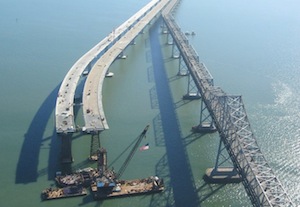
Speeds can drop suddenly at the edge.
Slow residential connections keep DSL speeds down, while cable’s problems are further back in the network. Researchers for the U.S. National Institute of Standards and Technology dug deep into data collected in 2011 by the FCC as part of its Measuring Broadband America program.
The NIST researchers asked the question: Where in the Internet is congestion? The results suggested that…
…a significant amount of congestion, especially for cable connections, occurs deeper in the network, perhaps, in the “middle mile”…or even farther, where the ISP connects to the “public Internet”. This is somewhat contrary to the popular belief that the edge is more congested than the core.
The “edge”, or last mile, is defined as the final outdoor segment that connects a home to the first electronic box in a provider’s network, for example a cable node in the neighborhood or a DSL port at a telephone exchange.
One way to read the report is that telcos have better core network infrastructure than cable companies, but where there’s the greatest difference between the two – ageing copper wires versus coaxial cable, DOCSIS versus DSL variants – cable comes out ahead. As the authors warn, though…
It is possible that because our method for detecting tight initial segments underestimates their prevalence, they could still be the dominant cause of recurrent congestion while remaining undetected.
Replacing copper lines over the last mile is an all or nothing proposition; it has to be done all at once in a given area, for subscribers and non-customers alike. Upgrading the core network, though, can be done incrementally as traffic and revenue builds. With the caveat that there’s more research to be done, it appears that telephone companies have a more difficult and costly job to do if they want to deliver faster and better broadband service.
